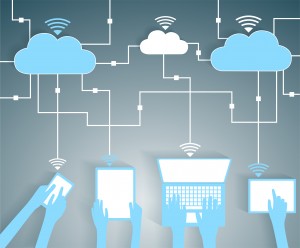 Technological innovation, in many ways, has caught up with what was only an imagined possibility 30, 20, or even 10 years ago. Global communications and real-time access to crucial data information and other business applications through BYOD (bring your own device) seems completely in line with science fiction, rather than science fact.
Technological innovation, in many ways, has caught up with what was only an imagined possibility 30, 20, or even 10 years ago. Global communications and real-time access to crucial data information and other business applications through BYOD (bring your own device) seems completely in line with science fiction, rather than science fact.
Indeed, while hoverboards and flying cars aren’t yet standard in 2015, NASA did release its latest discoveries just this month on what some are dubbing ‘warp speed’ technology: the ability to travel faster than the speed of light.
And although warp drive applications will undoubtedly take much more time to develop, no one can deny that BYOD has revolutionized the way business operates in today’s global economy. The drive to integrate such mobility has been accelerated by the ease, flexibility, and increased productivity BYOD offers employees. In addition, these benefits transfer to the company because staff members can work from any location and are empowered to use the device of their choice.
Challenges
A recent Gartner Survey found that 40 percent of employees in large U.S. Corporations use BYOD to perform work-related activities, which presents serious challenges for IT departments. In fact, the study discovered that 75 percent of those employees using their personal smartphones, desktops, laptops, and tablets did so without the official sanction of their employer.
Since many personal devices lack the appropriate security protocols, to combat possible security breaches, many companies are instituting BYOD standards for employees and building reliable BYOD IT platforms that include fail-safe user code of conducts, which apply to all of their business processes and all devices. Remote wipe capability is also employed, in case of loss or theft, that can erase all mission critical data through hybrid cloud solutions.
What's Next
Ensuring that enterprise applications are secure and perform seamlessly on BYOD is only the beginning. Technology continues to evolve: new mobile devices are poised to take the form of wristbands, headsets, and other wearable equipment.
Moreover, the growing use of BYOD will coincide with the next shift in technology. Business applications will need to evolve with the changes predicted. It is thought that BYOD will one day replace commuting, and possibly brick and mortar office space almost entirely. To adjust and enable uninterrupted client engagement, data capture, and optimized business analytics, applications will need to be able to permit continuous upgrades.
